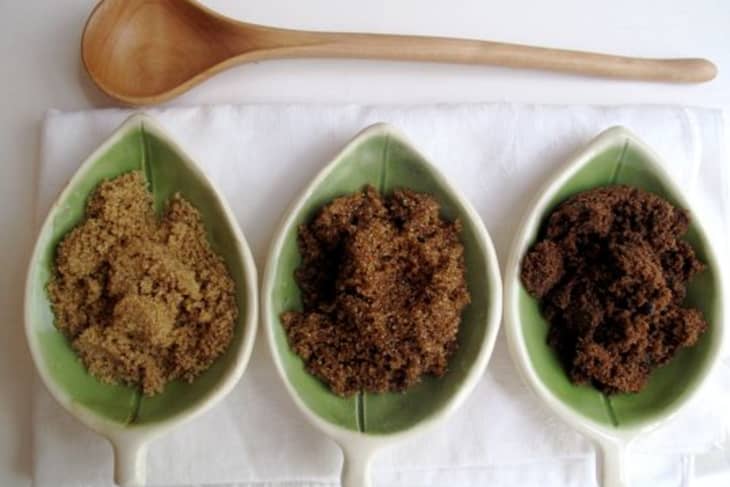How Are Demerara, Muscovado, and Turbinado Sugars Different?
If you think sugar is just sweet, think again. Sugars like muscovado, demerara, and turbinado have flavor depths and aromatic heights that blow plain ol’ granulated sugar out of the water. Find out the differences of each kind of sugar and know their color, tastes, texture, and uses.
What Makes “Raw” Sugars Different?
These three sugars come from sugar canes (some raw sugars are made from other plants) and get their brown color from their naturally occurring molasses, which isn’t fully removed during processing as it is for granulated sugar. While they’re usually classified as “raw,” these sugars are typically refined to some extent in order to be used in cooking. The differences between these sugars are the size of the crystals, the moistness of the texture, and the intensity of the molasses flavor.
Look for them in the natural foods section at your grocery store or in the baking section at natural foods markets. Also, if you’re based in the U.S., keep your eyes open when traveling abroad. Other countries often have interesting kinds of sugars that aren’t available Stateside.
How To Use Each Of These Sugars
Demerara: This is a type of cane sugar with a fairly large grain and a pale amber color. It has a pleasant toffee flavor and can be used in place of brown sugar.
Muscovado: Another cane sugar, this one has a very moist texture and a strong molasses flavor. As you can see in the image above, muscovado comes in different strengths. It’s excellent in savory dishes like barbecue sauces and marinades.
Turbinado: Less processed than brown sugar, turbinado is made from the first pressing of sugar cane and retains some natural molasses. It has a light caramel flavor that makes it a good replacement for regular white sugar.
Sucanat: Made from crystallized pure cane sugar, this truly unrefined sugar retains a higher proportion of molasses than other types of cane sugars. It has an intense, rather burnt taste that can be jarring in lighter baking recipes but is fantastic in things like spice cakes and ginger cookies.
Jaggery: This sugar is typically made from palm, coconut, or java plants and comes compressed into a pattycake or cone. It has an earthy sweet flavor that we like over oatmeal and in some fruit crumbles.
Piloncilo: Similar to jaggery, this uniquely Mexican sugar is the secret ingredient in many salsas, soups, and mole sauces. It has a strong and almost-smoky molasses flavor.
(Image: Dana Velden)
